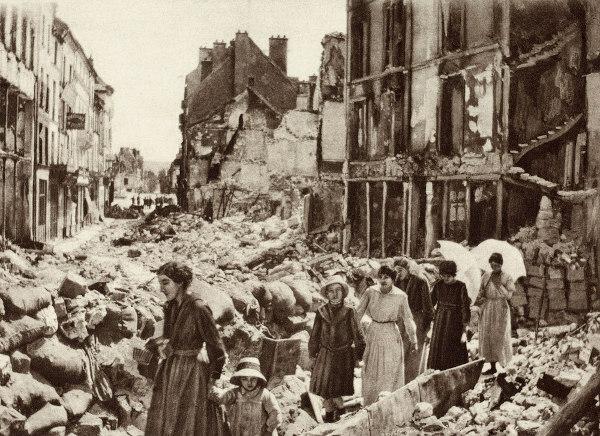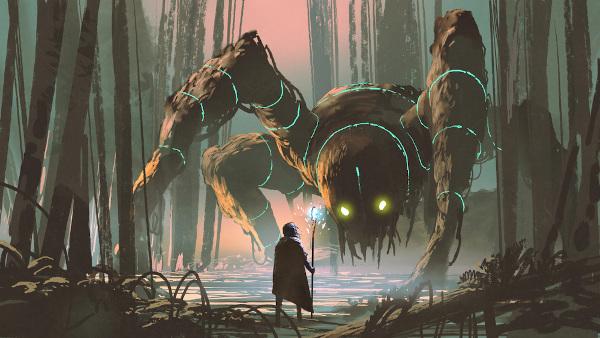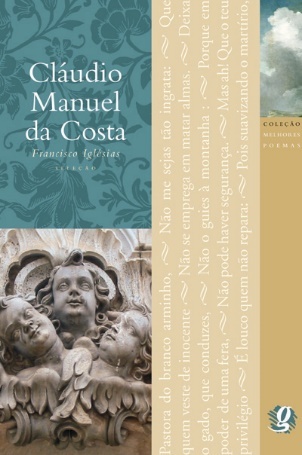magical realism or Fantastic is a classification given to certain artistic works, such as books, paintings and films that present a magical or fantastic reality, due to a deformation of reality capable of generating strangeness, nonsense and an atmosphere of mystery. had its heyday in 20th century (marked by two world wars), although works with such characteristics already exist in the 18th and 19th centuries.
In literature, books characterized as such were signed by authors such as Gabriel García Márquez (One hundred years of Solitude), Franz Kafka (the metamorphosis) and Machado de Assis (The Posthumous Memoirs of Bras Cubas). In painting, names like Ernst Fuchs, from the Vienna School of Fantastic Realism, sought to portray this kind of realism in his works. In cinema, it is possible to point out films such as Wings of desire, by Wim Wenders, The curious case of Benjamin Button, by David Fincher, in addition to the great mystic circus, by Cacá Diegues.
Read too: Fantastic tale – short narrative with characters that go beyond the limits of reality
Historical context

There is no consensus among researchers about when magical or fantastic realism emerged. Most of them argue that its origin is located between the 18th and 19th centuries. However, it was from the 20th century onwards that he became more active, as he reflected a world characterized by absurdity, meaninglessness, existential emptiness and marked by context shown below.
Imperialist exploration: started in the 19th century and amplified in the 20th.
Russian revolution, in 1917.
First World War, from 1914 to 1918.
Fascism Italian, from 1922 to 1943.
Nazism German, from 1933 to 1945.
Second World War, from 1939 to 1945.
Holocaust: genocide occurred during World War II.
Hiroshima and Nagasaki atomic bombs, in August 1945.
Cold War, from 1947 to 1991.
Do not stop now... There's more after the advertising ;)
Main features
The term "magical realism" was widely discussed in the 1940s and 1950s, with the aim of characterizing works where reality was shown in a magical, fantastic way, as opposed to a scientific realism. This magical or fantastic realism, therefore, is characterized by a strange way of conceiving the real, or even a distortion of reality. The term came up in 1925, when the German art critic Franz Roh (1890-1965) intended to characterize post-expressionist.

From this perspective, some critics sought to differentiate magical or fantastic realism from the so-called "wonderful realism", which is associated with the unusual, the extraordinary, but without the characters' estrangement in face of the wonderful reality, something very associated with Latin American culture. In magical or fantastic realism, everything is just a creation; in marvelous realism, on the other hand, there is a representation of the “wonderful” present in reality; therefore, the “wonderful” is expressed naturally, as it is possible to observe in indigenous legends, for example.
However, it is common to include, in the same category, wonderful realism and magical or fantastic realism, which, in general, have the following characteristics:
nonsense: meaninglessness;
surreality or superreality: absurd situation;
irrationalism or illogism: facts that contradict natural laws;
presence of the supernatural: events without explanation;
ability to cause strangeness in readers or receivers;
link with the mystery, the unknown.
This is what we can see in this excerpt of the story The pyrotechnician Zechariah, by Murilo Rubião:
The only person who could give certain information on the subject is me. But I am prevented from doing it because my companions run away from me as soon as they see me ahead. When caught by surprise, they are appalled and cannot articulate a word.
I actually died, which matches the version of those who believe in my death. On the other hand, I'm not dead either, as I do everything I used to do and, I must say, with more pleasure than before.
Read too: Franz Kafka – One of the Most Influential Writers of 20th Century Western Literature
Main authors
Edgar Allan Poe (1809-1849): American;
Gabriel García Márquez (1927-2014): Colombian;
Isabel Allende: Chilean;
Jorge Luis Borges (1899-1986): Argentine;
Oscar Wilde (1854-1900): Irish;
Franz Kafka (1883-1924): Czech;
Alejo Carpentier (1904-1980): Cuban;
Bram Stoker (1847-1912): Irish;
Julio Cortázar (1914-1984): Argentine;
Lewis Carroll (1832-1898): British;
Horacio Quiroga (1878-1937): Uruguayan;
Milan Kundera: Czech;
Italo Calvino (1923-1985): Italian;
Manuel Scorza (1928-1983): Peruvian;
Reinaldo Arenas (1943-1990): Cuban.
Read too: Murilo Rubião – forerunner of fantastic realism in Brazil
Main works
extraordinary stories (1833-1845) by Edgar Allan Poe;
One hundred years of Solitude (1967), by Gabriel García Márquez;
the house of the spirits (1982) by Isabel Allende;
“The other”, from the work the sand book (1975), by Jorge Luis Borges;
The portrait of Dorian Gray (1890) by Oscar Wilde;
the metamorphosis (1915) by Franz Kafka;
the kingdom of this world (1949) by Alejo Carpentier;
Dracula (1897) by Bram Stoker;
“Continuity of Parks”, from the book End of the game (1956), by Julio Cortázar;
Alice in Wonderland (1865) by Lewis Carroll;
Jungle Tales (1918), by Horacio Quiroga;
The book of laughter and forgetting (1979) by Milan Kundera;
the invisible cities (1972), by Italo Calvino;
Garabombo, the invisible (1972) by Manuel Scorza;
the hallucinating world (1966), by Reinaldo Arenas.
![Cover of the book One hundred years of solitude, by Gabriel García Márquez, published by Grupo Editorial Record. [1]](/f/7e67fa283d6ca2ea704daf04db4edc4a.jpg)
Fantastic realism in Brazil
Some Brazilian writers used fantastic realism in their works:
the magic spyglass (1869), by Joaquim Manuel de Macedo (1820-1882);
The Posthumous Memoirs of Bras Cubas (1881), of Machado de Assis (1839-1908);
Macunaíma (1928), of Mario de Andrade (1893-1945);
the aggressor (1943), by Rosário Fusco (1910-1977);
Dona flor and her two husbands (1966), by Jorge Amado (1912-2001);
the hour of ruminants (1966), by José J. Veiga (1915-1999);
Antares incident (1971), by Erico Verissimo (1905-1975);
the colonel and the werewolf (1974), by José Cândido de Carvalho (1914-1989).
Yet, Murilo Rubião (1916-1991) is the main representative of Brazilian fantastic literature. These are works by his author:
the former magician (1947);
the red star (1953);
Dragons and other tales (1965);
The pyrotechnician Zechariah (1974);
The guest (1974);
the house of the red sunflower (1978);
The man in the gray cap and other stories (1990).
Read too: story from fairy tales
fantastic realism in painting

The Vienna School of Fantastic Realism, founded in 1946, is made up of a group of about 30 painters. The painting of these artists is characterized by a allegorical or symbolic realism. The most known are:
Arik Brauer;
Ernst Fuchs (1930-2015);
Rudolf Hausner (1914-1995);
Wolfgang Hutter (1928-2014);
Anton Lehmden (1929-2018);
Fritz Janschka (1919-2016).
Fantastic realism in cinema
there is still a lot controversy among the specialized critics about what would be the fantastic realism in cinema. Thus, there is no consensus regarding its defining characteristics. However, much of the criticism associates the fantastic cinematographic realism with folkloric elements, without, however, there being consonance between the opinions. In light of this reality, cinematographic works that somehow, extrapolate the sense of the real, the concrete, and dialogue with magical or even surreal elements, for example:
The Wizard of Oz (1939), by Victor Fleming (1889-1949)—United States;
Mary Poppins (1964), by Robert Stevenson (1905-1986)—United States;
At midnight I'll take your soul (1964), by José Mojica Marins (1936-2020) — Brazil;
the endless story (1984), by Wolfgang Peterson — Germany, United States and United Kingdom;
Wings of desire (1987) by Wim Wenders—Germany and France;
The fabulous destination of Amélie Poulain (2001), by Jean-Pierre Jeunet — France;
Lord of the Rings (2001-2003), by Peter Jackson — New Zealand and the United States;
Pan's Labyrinth (2006), by Guillermo del Toro — Spain, Mexico and the United States;
The curious case of Benjamin Button (2008), by David Fincher — United States;
the scared tit (2009), by Claudia Llosa — Peru;
the shape of water (2017), by Guillermo del Toro—United States;
the great mystic circus (2018), by Cacá Diegues — Brazil.
solved exercises
Question 01 (Enem)
“Narizinho looked around at the audience. There couldn't be anything more curious. Little beetles in tails and flowers in his lapel conversed with cockroaches in mantillas and forget-me-nots in their hair. Golden bees, greens, and blues, spoke ill of slim-waisted wasps—thinking it was an exaggeration to wear such tight vests. Sardines by the hundreds criticized the excessive care that butterflies in gauze headdresses had with the dust from their wings. Bitters with stings tied to prevent them from biting. And canaries singing, and hummingbirds kissing flowers, and shrimp prawning, and crabs crabbing, everything that's tiny and doesn't bite, tiny and not bite."
LOBATO, Monteiro. Reigns of Little Nose. São Paulo: Brasiliense, 1947.
In the last period of the passage, there is a series of verbs in the gerund that contribute to characterize the fantastic environment described.
Expressions such as "camorando", "crab" and "small and not biting" mainly create effects of
a) emptying of meaning.
b) monotony of the environment.
c) status of animals.
d) interruption of movements.
e) dynamicity of the scenario.
Resolution:
Alternative “e”.
The verbs in the gerund characterize the fantastic environment, where there are “tailed beetles” and “mantilla cockroaches”, for example. This environment is marked by action, movement, the dynamism of canaries, hummingbirds, shrimp and crabs.
Question 02 (UEFS)
I was still very young, but I knew a lot of things that adults didn't. I knew you shouldn't respond to greetings from the Glimerians, that race of dwarves you meet when you least expect it and who do everything to distract us from our mission; he knew that in places where the mother of gold appears on the surface of the earth, she must not bend down even to tighten her shoelaces, greed is everywhere and bites meekly; he knew that when he heard footsteps behind, no one should stop or run, but keeping a normal gait, whoever showed signs of fear would be lost on the road.
The road is littered with traps, trapdoors, dangerous underworlds, not to mention tempting detours, but I could go there and back with my eyes closed without making the slightest slip.
VEIGA, José J. The little horses of Platiplantus: Tales. 18. ed. Rio de Janeiro: Bertrand Brazil, 1989. P. 61.
José J. Veiga is a representative writer of the current called magical or fantastic realism. Such realism, which provokes a feeling of estrangement, is present in the text through a narrator who
a) mocks the wisdom accumulated over the years.
b) level with the elders in knowledge about life.
c) he is insecure in the face of the challenges that life offers him.
d) questions the boundaries established between the real and the imaginary.
e) reveals itself to the reader through an inversion of the natural order of things.
Resolution:
Alternative “e”.
When the narrator says that “I was still very young, but I knew a multitude of things that adults didn't”, it is possible to see the inversion of the natural order of things, since adults should have more knowledge than a kid.
Image credits:
[1] Reproduction: Record Publisher
by Warley Souza
Literature teacher


